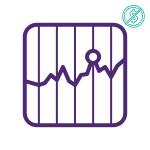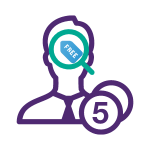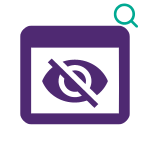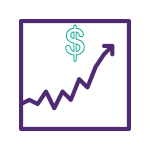Free Online Stock Trading - How to do it
Free online stock trading is pretty similar to regular trading. The main difference is the commission. When you start stock trading, usually, you come across several fees and commissions that are set by the broker. However, if you start stock trading without commission, your money that was spent for the commission and fees during stock trading will no longer go to your broker.

Instead, you’ll be allowed to save the money and invest more in the assets in order to get high returns. What’s more, it is worth noting that commission-free brokers usually furnish traders with the opportunity of trading through CFDs. CFDs, also known as contracts for difference, allow traders to speculate on the market price changes. CFDs are contracts between two parties - buyer and seller and trading with this instrument doesn’t mean that the investor is owning an underlying asset. Instead, he/she is “borrowing” an asset from the seller and gives him/her back the asset at a predetermined time. And, in addition, the trader gives back the seller the value of an asset. This value is estimated at the price when the contract was concluded. Through the differences between the current value of an asset and its value at a contract time, traders can get money returns.
There are a few steps you need to take if you want to trade stocks for free. These include finding a free broker, choosing the most suitable and preferable stock they want to trade with, and identifying hidden fees. All of the mentioned steps are essential for commencing free stock trading.
Find A Free Broker
The first thing you as a trader need to do is find a free broker, and they’re not that hard to come across. Moreover, since Robinhood’s initiative, many brokers started to make stock trading commission-free, in order to attract more and more customers. This doesn’t necessarily mean that the brokers can’t get money returns through the traders. There are some additional ways except commission to make money.

In order to find a broker for stock trading without fees, you need to do quite a lot of research. One of the main things that are worth considering is the reputation of the broker. There may be many free brokers out there, but that doesn’t mean that all of them are reliable and trustworthy. The main things you always need to check are the reputation of the broker, customer testimonials and, of course, their license.
Choose Your Stocks
The next step you find a proper broker is to choose your stocks. Even though a platform can be classified as a “free stock trading website or app”, not every stock may have that privilege. This means that when the broker is commission-free this doesn't mean all the stocks have this feature. There are some stocks that can’t be traded without commission. The main idea behind this is that the broker itself has costs to send and receive orders from a stock exchange. The higher the cost for a particular stock’s operations, the less likely it is for the broker to have no fees on it.
So, when you find a free platform for stock trading it’s always important to check whether your broker provides free trading for your chosen stocks or not. The process of choosing a stock should be grounded on the research. You need to keep an eye on the charts and observe the performance of a certain stock in the marketplace. After that, you can easily decide where to invest your funds. After making the decision about investing your money in an asset, you can ask your broker whether or not it falls under the no-commission category. Also, you can ask the broker to provide a list of stocks they don’t charge commissions for.
Identify Hidden Fees
Usually, people think that the main returns the brokers can get from the traders are based on the commission fee, which chips away at the trader’s investment. So, what happens in the case of commission-free brokers? How are they able to both make money and provide you services to conduct stock trading with no fees?
The answer is that there are fees for something else. So, until you start trading with a commission-free broker you need to ask the broker what it could charge you for. For example, account opening fees, inactivity fees, maintenance fees, closing fees, withdrawal fees. There are way too many to even list.

Account opening fees are when the broker charges you for registering with them. Inactivity fees are charged when you haven’t opened or closed a position in a while (usually 6 months). Another hidden fee that you might come across while commission-free stock trading is a closing fee, which is charged after the trader closes his/her account.
How do Stock Brokers Make Money Without Fees?
These hidden fees are not the only way that brokers can make money. In fact, they’re the smallest part of their revenue.
The pioneer commission-free brokerage - Robinhood for example, has several ways of making money. One of the ways is to charge customers a monthly fee. Instead of getting money from per-trading, they are charging customers to pay a definite amount of money per month. What’s more, the company has other fees for their services that aren’t related to buying or selling the stocks. While trading stocks for free means that the broker gets no commission through the trader's activity, it doesn’t mean that the broker gives all the services to investors without commissions and fees. Robinhood, apart from the above-given example, uses additional fees for the services like wire transferring and overnight domestic check delivery.
However, the most effective method for commission-free brokers to generate profit is “Payment for Order Flow”, which allows them to get additional payouts from customers and investors.
Payment for Order Flow
Payment for order flow or stock order routing is the preferred way for commission-free brokerages, which offer customers free trading stocks, to make money. This method includes selling your orders to third parties. To make it easier to understand let’s take an example.
Let’s say that you want to buy 10 shares in Apple. You log into your commission-free broker’s app, you put in an order for 10 shares and you hit the buy button. At that moment the broker takes that order, sends it to a high-frequency trading company, they buy the shares potentially at a lower price and then they sell the shares to you at the price that you wanted to buy them at.
The high-frequency trading company makes their profit and commission-free brokers get a kickback. So how can high-frequency companies make money when the trader conducts trading stocks with no fees?

Think about manipulation technique number one - dark pools. High-frequency trading companies have access to public exchanges, but they also have access to private exchanges - the dark pools. So, Apple might be trading at one price on a public exchange but in the dark pool, it might actually be trading at a cheaper price. This is how the high-frequency company can actually buy those shares at a cheaper price and then sell them to you at a higher price.
So you might be thinking. “Hey! I want to trade in the dark pool too!”. But it’s not that easy or cheap. Your order needs to be at least a block of 200 or more shares. Your order of 10 shares in Apple actually gets bashed with other orders. That’s pretty much how trading stocks with no fees works on the company level.
Now the question comes up again is this ethical or is this legal? Of course, it's legal because all these brokerage firms such as Robinhood, need to register all these orders with the SEC, which then approves them.
What Trading Stocks for Free Really Means
When you search online for “free stock trading” you’ll notice that many results lead to platforms with a
Demo account rather than an actual broker without any fees. The main reason behind this is that actually trading stock for free stands for using the demo version of a trading platform. When people use the demo version rather than a live account, this means they are using virtual cash instead of the real deal. Of course, this doesn’t have an effect on the broker’s and customer’s money returns. The main principle of a demo account is to just train and check strategies before implementing them on a live account.
So, when you come across the phrase free stock trading it doesn't necessarily mean that there is a broker which allows you to trade with stocks commission-free.